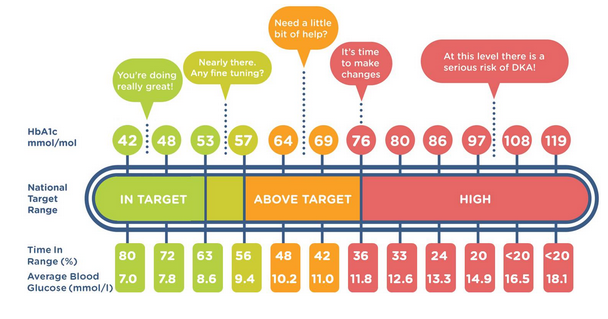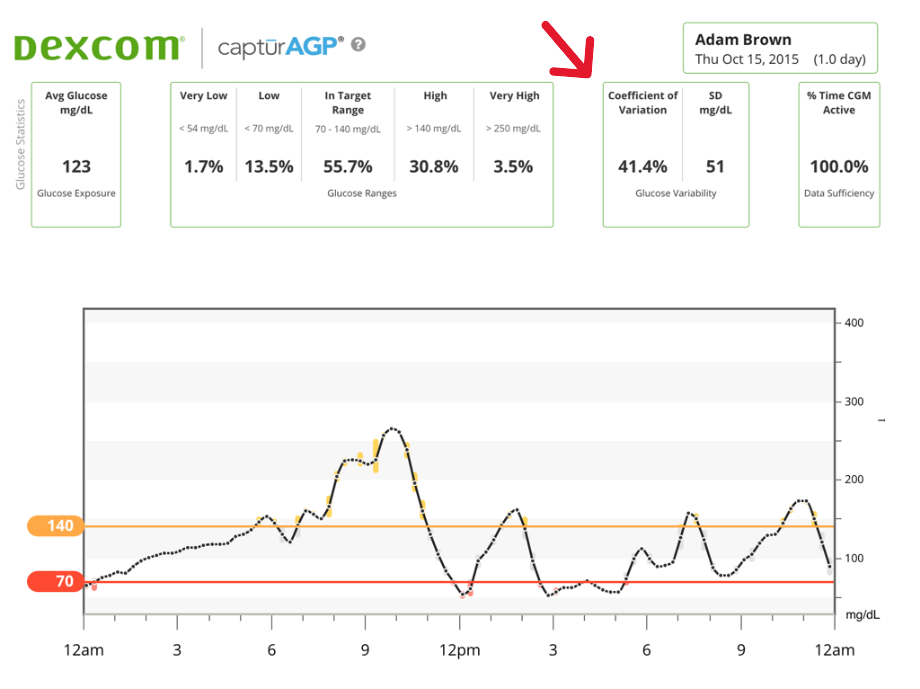T1D Cheat Sheet: HbA1c and Other Key Metrics
- Caitlin Macleod
- Dec 19, 2024
- 3 min read
Updated: Jan 16
When it comes to diabetes management, your goals should be as personal as your underwear. This cheat sheet gives you a rough idea of what “ideal management” might look like and explains the most important tools used to measure your progress as a T1D. It is intended as a guiding star rather than a list of hard and fast rules.

HbA1c
What is it?
HbA1c is an indication of average blood sugar over the past 2 to 3 months.
Ideal range:
<6.5% (though personal goals will vary)
Why it matters:
<7.5% significantly reduces the risk of diabetes-related complications.
> 9% indicates a 1 in 3 risk of developing retinopathy and kidney disease.
8 - 8.9% indicates a 65% higher risk of dementia
The good news!
Every 1% you lower your HbA1c cuts the risk of complications by about 10%.
When to get tested:
Every 3 to 12 months.
Note!
It is possible to have a good HbA1c and be on a glucose rollercoaster or hitting lots of hypos so it's important to use HbA1c alongside other metrics.
Time in Range (TIR)
What is it?
TIR is the percentage of time that your blood glucose is within an ideal range. It's measured via a continuous glucose monitor (CGM) and is often shown for the last 7, 14, 30, and 90 days.
Target range:
3.9 to 10 mmol/l for most adults (personal goals will vary)
You can break this down by time of day as follows:
4 to 7 mmol/l before meals
8 to 9 mmol/l after meals
6 to 10 mmol/l before bed
What is a good target TIR?
70% TIR is good; 80% is ideal.
Less than 4% below range (1hr/day)
Less than 25% above range (6hr/day)
Why it matters:
If you spend a lot of time below target rate, you’re at risk of severe hypos.
A 10% decrease in TIR, increases the risk of eye problems worsening by 64% early signs of kidney problems. by 40%.
The good news!
Improving glucose levels for just 2.5 h each day could massively improve your long term health.
Glycaemic Variability

What is it?
Even if your HbA1c and TIR look great, you could be on a glucose rollercoaster with wide swings every day, which can make you feel pretty horrible. It's normal for blood glucose levels to fluctuate throughout the day but you should aim for a fairly flat CGM line with minimal spikes or crashes.
How can I measure it?
Visually: If your CGM looks like a mountain range, your variability is probably high.
"Vibes check". If your mood is all over the place and it feels like you're constantly correcting, your variability might be high.
Standard Deviation: This is a statistical measure of how much your blood sugar tends to differ from your average glucose.
Coefficient of Variation: This is standard deviation divided by your average glucose.
A lower coefficient of variation means you're glucose levels are not bouncing up and down as much. According to Libreview, the target CV is 36% or less.
Complications
To catch issues early, you should have annual checks for:
Eye health (retinopathy)
Foot health (neuropathy)
Kidney disease (via blood and urine)
Your doctor should also keep an eye on your cholesterol and blood pressure.
Psycho-social Factors
Diabetes management is not just about numbers. It's also about ensuring that diabetes doesn't get in the way of living your life. Take time to consider how diabetes is impacting your mental health, relationships, career, and relationship to food and exercise. You might find it useful to check out the Diabetes Distress Scale.
Source List:
Diatribe.org (on glycaemic variability)
Journal article 1 (on T1D and dementia risk)
Journal article 2 (on CGM data interpretation)
Journal article 3 (on TIR and complications)

Comments